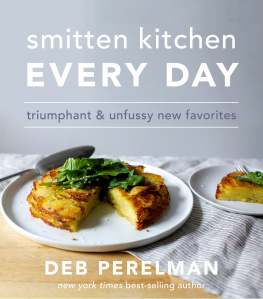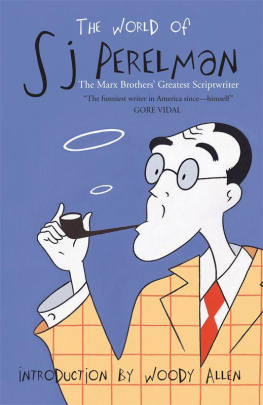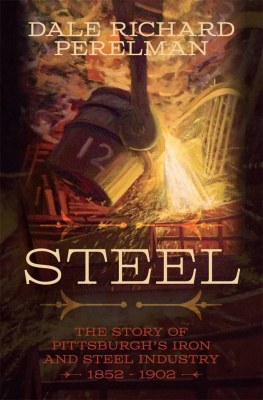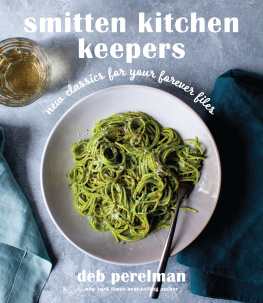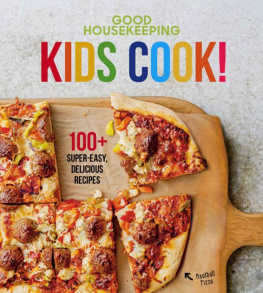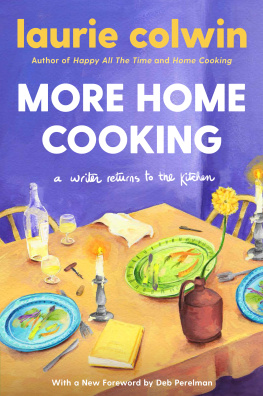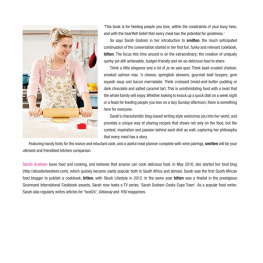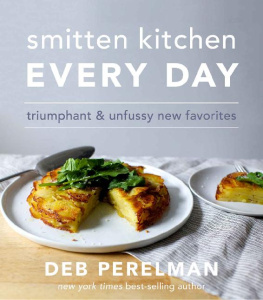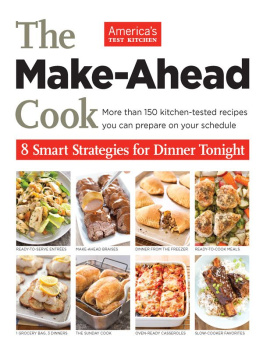A NOTE ABOUT THE AUTHOR
Deb Perelman is a self-taught home cook, photographer, and the creator of smittenkitchen.com. She is the author of the New York Times best-selling The Smitten Kitchen Cookbook, which won the IACP Julia Child Award. Deb lives in New York City with her husband, son, and daughter.
acknowledgments
No one who cooks cooks alone.
LAURIE COLWIN
To everyone who has come to the Smitten Kitchen to read, to cook, and to share over the last 11 years: Thank you for inspiring me every day to become a better cook and writer. You are the very best part about this gig.
A huge humbled thank-you to everyone at Knopf, especially Paul Bogaards, Chris Gillespie, Laura Wanamaker, Kathy Hourigan, Kathleen Fridella, Cassandra Pappas, Lisa Montebello, Carol Carson, and Janet Hansen. Before my first book, Alison Fargis warned me that the best way to proceed with a publisher was Just dont be a Difficult Author. She tried, okay? I appreciate the care and quality you put into getting these books out into the world.
To Lexy Bloom, for otherworldly patience and kindness putting together this book and for believing in it even when I often did not. Tom Pold, thank you for working tirelessly behind the scenes to keep things running smoothly.
To Alison Fargis, for going above and beyond what any book agent has done in the history of book agency. I feel lucky to have walked into your office 8 years ago, even if it was just to tell you that you were out of your mind if you thought I would ever in a million years write a cookbook.
To Sara Eagle, for being the better half of my professional brain: organized, responsive, and full of bright ideas.
To Leda Scheintaub, for your careful, detailed, and inexhaustible recipe testing and editing.
To Patricia Austin, for lending your deep baking knowledge to whisk these baking recipes into shape.
To Anna Painter, for coaxing me off the crumb cake ledge and for years of testing and cheer.
To Jessie Sheehan, for getting those cakes ready for a party.
To Rebekah Peppler, for the eleventh-hour styling rescue.
To Angela Moore, for being my copilot on all things fishy.
To Gail Dosik, for changing my cookie game forever.
To Julie Touber, for helping my strawberry tart loosen up.
To Magnus Lundstrm, for making the most beautiful cutting boards.
To Rachel Roddy, for introducing us to Rome and helping to unlock the mystery of foccacia ripiena.
To Daniel Shumski, for guidance waffling everything.
To Venetia Iliopoulos at Fresco, for the best croissants, Americanos, and spiral pies.
To Inger Ladegaard, for nearly two decades of Danish Christmas inspiration and hospitality.
To both my families: Thank you for your endless support, babysitting, and recipe tasting; and for ducking flying objects when youve had the audacity to ask when this book would be done.
To my bear and my bunny: Thanks for being the two finest little people weve ever met and for bursting through the door cheering on chicken noodle soup days.
To Alex Perelman, my favorite person, my support system, and the best dad out there: This would be no fun without you.
measurements
metrics
Eager to make this book as useful as possible to a wide range of readers, I have included metric weights in recipes, just as I did in The Smitten Kitchen Cookbook. Because most digital scales these days switch easily between ounces and grams, I listed most ingredients only in grams. I did try to include ounces on items that most people in the United States buy by weight, such as meat and cheese, and items that are packaged by their weight. If your scale reads only in ounces, Google will happily do the math for you: simply type, e.g., 15 grams in ounces into the search bar, which will return the result .52 ounces, or half an ounce. I have also included the spoon/cup-to-weight and volume equivalents below.
I also excluded very tiny weights, usually items that are a tablespoon, a teaspoon, or less, so small that including them bordered on quibbling.
Still new to scales? Please let me convert you.
how to use a kitchen scale (and ditch your measuring cups forever)
Count me among those who rejoice whenever a recipe is presented in weights. Why? Because nothing is more accurate. A cup of flour, packed different ways, can clock in anywhere from 115 to 200 grams. You could end up with almost double the flour the recipes writer intended in your cake! But a 130-gram cup will always be a 130-gram cup. Plus, I am all about using fewer dishes and nothing minimizes clutter in a kitchen like a scale. Measuring 2 cups flour into a bowl requires a 1-cup measure, a -cup measure, and a -cup measure, plus a bowlthats 4 dishes. On a scale, you only need that bowl and to fill it until the number hits 360 grams. Then you can add your next ingredient, and the next, and voil! Youve nearly made a one-bowl recipe!
But enough of the sales pitch. So, you bought a kitchen scale. Now what?
Place your empty bowl on the scale and tare or zero out its weight. (On scales without tare button, the on/clear button usually does the same job.) Add your first ingredient, slowly, until the scale reaches the weight you need. Zero it out again. Add the next ingredient. Zero it out again. If the recipe calls for you to whisk, whip, or blow gentle kisses across the surface of your ingredients, go do that, too, but when it calls for the next ingredient, rezero out the weight of the bowl so that you can continue.
Youll have this method down in no time. Youll wonder why you didnt try it sooner. And now, you can use all the extra space in your drawer that was once devoted to a tangle of measuring cups and spoons to stash more chocolate.
useful conversions
fahrenheit/celsius/gas mark equivalents
275F = 140C = gas mark 1
300F = 150C = gas mark 2
325F = 165C = gas mark 3
350F = 180C = gas mark 4
375F = 190C = gas mark 5
400F = 200C = gas mark 6
425F = 220C = gas mark 7
450F = 230C = gas mark 9
475F = 240C = gas mark 10
length equivalents
inch = .5 cm
inch = 1 cm
1 inch = 2.5 cm
6 inches = 15 cm
1 foot (12 inches) = 30 cm
volume equivalents
teaspoon = fluid ounce
1 teaspoon = fluid ounce
2 teaspoons = fluid ounce
1 tablespoon = 3 teaspoons = fluid ounce
2 tablespoons = 1 fluid ounce
3 tablespoons = 1 fluid ounces
cup = 4 tablespoons = 2 fluid ounces
cup = 2 fluid ounces
cup = 4 fluid ounces
cup = 5 fluid ounces
cup = 6 fluid ounces
1 cup = 8 fluid ounces
1 pint = 2 cups = 16 fluid ounces
1 quart = 4 cups = 32 fluid ounces
2 quarts = 8 cups = 64 fluid ounces
1 gallon = 4 quarts = 128 fluid ounces
weight equivalents
ounce = 15 grams (rounded/approximate/practical equivalent; exact is 14)
1 ounce = 30 grams (exact = 28)
2 ounces = 55 grams (exact = 56)
4 ounces = pound = 115 grams (exact = 113)
5 ounces = pound = 150 grams (exact = 151)
8 ounces = pound = 225 grams (exact = 227)
12 ounces = pound = 340 grams (exact)
16 ounces = 1 pound = 455 grams (exact = 454)
24 ounces = 1 pounds = 680 grams (exact)
32 ounces = 2 pounds = 905 grams (exact = 907)
a guide for special menus
Keeping in mind dietary preferences and restrictions, Ive created a guide (also reflected in the index of the book) that will, I hope, make it easier for you to select options or create menus that cater to vegetarian, vegan, gluten-free, and dairy-free diets.
vegetarian
Note that the rennet used in cheese making is often animal based. For recipes containing cheese, look for labels that indicate an animal-free rennet (vegetable rennet or microbial rennet) is used to ensure that the cheese is completely vegetarian. For recipes that call for stock, choose the vegetable stock option. Also note that because all of the baked goods, desserts, and drinks in the book are vegetarian, they are not listed below.
Next page
